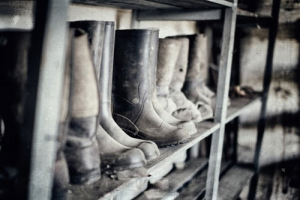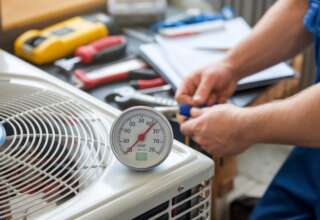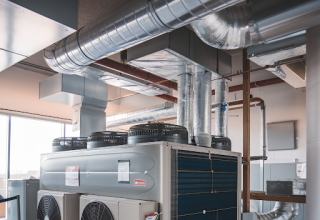Do we love a man in a uniform or what? Long day, perspiring, dirt all over. He has a hard hat, possibly a sled-hammer…we’ll take it. Or is that just for the movies?
Each to their own I suppose.
Safety First
When it comes to being on a job site, the key factor for all employers is the safety of their employees. From being trained in the appropriate skills, updating their qualifications to the correct attire.
Clothing plays a major role in the workplace. Besides making you visible to your colleagues, with regards to wearing high visibility jackets, but also to protect you from the elements and accidents.
And because men are usually standing on their feet all day on building sites, it’s important to choose the correct footwear. A pair that serves as comfort, durability and most importantly, safety.
Choosing the Right Footwear for You
Depending on the type of work you do, you will determine the boot you wear. If your job is in carpentry, construction or chopping down trees, a steel toe is a must. These can help prevent serious injury and, save afoot.
What’s known as a composite toe boot is more suited to those who work solely outdoors. They have a strong plastic or carbon fiber toe. Read more about them here https://nicksboots.com/blog/post/composite-toe-vs-steel-toe-boots/ to understand the benefits of each.
Insulation and Waterproofing
The worst thing you can have while working is frozen, cold wet feet. Ensuring your footwear is properly insulated as well as waterproof is a must. It’s easy to get complications from bacteria that thrive in moist areas, and this could severely impact your future working abilities if not stopped in its tracks from the get-go.
Will a Waterproof Spray work?
Absolutely. They are designed to get into the fibers of the shoes or boots and create a layered barrier that deflects water and dirt. This is effective, but because wear and tear can start to chip away at the layers, it’s important to regularly spray and protect the boots.
There are boots available that have what they called a Gore-Tex layer already sewn into the inner boot, and this stops all moisture from getting in.
What to Look for In a Construction Boot?
If you know you’re going to be on your feet all day, then be sure to invest in a pair that is going to treat you right. Nothing worse than having to suck it up for the next 5 years till they eventually wear out.
Also, look for something that is going to allow for some room for your feet to swell as they tend to do near the end of a long day’s work, but not so much that your foot is slipping as you walk.
Look through this guide of Construction Work Boots as they explain all the do’s and don’ts when it comes to deciding on the right workwear. Take your time when choosing, these are going to be around for a while.
I remember growing up and always seeing my dad in the same sandy-colored boots with thick black rubber soles and thinking to myself, does this man only have one pair of shoes?
He did try to explain to me the safety side of things, as he used to work on Oil rigs far out to sea where the ocean meets the horizon, but it went straight over my tanned, wild blond-haired head. I see now though.
4 Mistakes to Avoid when Choosing a Construction Boot
- Just plain old winging it and guessing because you can’t be bothered to try them on. Your feet will go on strike with in the first week.
- Focusing more on the price that functionality. Fashion isn’t going to save your feet from an accident.
- Wrong Gear. Choosing the wrong tool for the job. The same goes for incorrect footwear.
- No name brands. Opting to go with an unknown brand is dicey. Rather pick a trusted name you know.
Quality vs Durability vs Affordability
When sizing up which boot to go with, there are so many factors to consider, and we might have to compromise on one to achieve the other. This link will give you a good insight as to what to look for.
6inch or 8inch?
Who would even think to worry about height size on a construction boot? 6inch tends to give you a bit more flexibility, good ankle support and great for being on uneven terrain.
The 8inch, on the other hand, is more for the military or police force side of the coin, it provides much more support as well as being quite rigid, so no ankle rolling. They do however let less airflow in, so be sure to use well-ventilated socks if you go this route.
Whatever you choose, in my humble opinion, I’d say go for comfort over fashion.











